The Forgotten Way African Americans Stayed Safe in a Racist America

For African American travelers, much of the U.S. could be a hateful and dangerous place, even into the 1960's.
Jim Crow laws across the South mandated that restaurants, hotels, pool halls and parks strictly separate whites and blacks. Lynchings kept blacks in fear of mob violence. And there were thousands of so-called “sundown towns,” including in northern states like Indiana, Illinois, Minnesota and Michigan, which barred blacks after dark, an unofficial rule reinforced by the threat of violence.
So in 1936, a postal worker named Victor Green began publishing a guide to help African American travelers find friendly restaurants, auto shops and accommodations in far-off places. Green dubbed the guide after himself – the “Green Book” – and published it for decades. Green says he was inspired by the Jewish press, which had long published information on restricted places.
The images below come from the New York Public Library, which recently digitized 21 volumes of the Green Book, from 1937 to 1964.

Covers from the 1948, 1949, 1950, 1951 railroad, 1956 and 1960 editions
The Green Book included listings for hotels, restaurants, gas stations, bars and beauty salons across the U.S., as well as travel articles, paid advertisements, and stories about local attractions. The guide first focused on New York, but was gradually expanded to cover the whole U.S. The first edition said on its cover, "Let's all get together and make motoring better," while the 1949 edition featured a quote from Mark Twain – “Travel is fatal to prejudice.”
While poverty and discrimination kept many African Americans from owning cars, a new black middle class rose up in the 1930's, 1940's and 1950's, and many of them were eager to escape poor treatment on public transportation.
Yet car ownership came with its own challenges. Many African Americans would pack meals, blankets and gasoline in their cars on trips in case they ended up somewhere where they wouldn’t be served or didn’t want to ask.
Green Books were sold at Esso service stations, one of the few gas station chains that served African Americans. The first edition retailed for a quarter, and Green soon upped the price to 75 cents.
Brian Foo of NYPL Labs used the library's data to create an interactive map that allows you to plot different trip, and see what the Green Book suggests along your route. Foo's program combs through the listings in the Green Book to find a restaurant roughly every 250 miles and lodging every 750 miles. The map below shows some of the options for African Americans traveling from Washington, D.C. to Los Angeles:
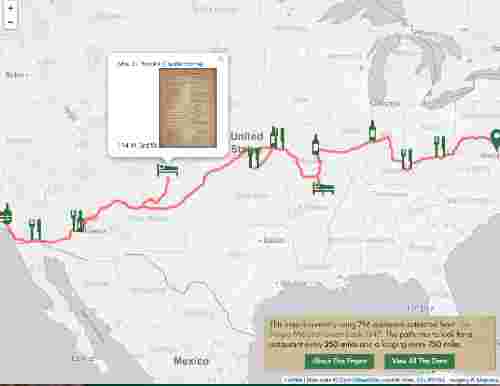
Brian Foo, NYPL Labs
Here's a trip from Chicago to Miami with two options tourist homes for the night, and four restaurants:
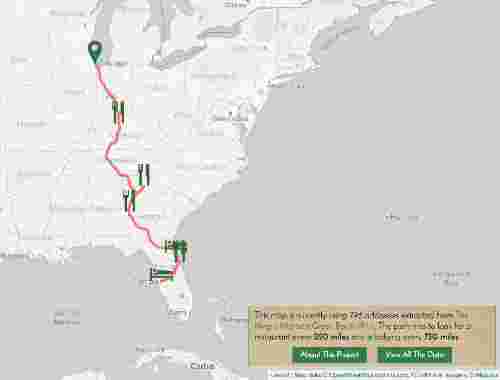
Brian Foo, NYPL Labs
And here are heat maps that Foo created showing the density of the listings, first in 1947 and then in 1956. Though the listings increase a lot as Green continues to work on his book, overall there are few listings west of the Mississippi.
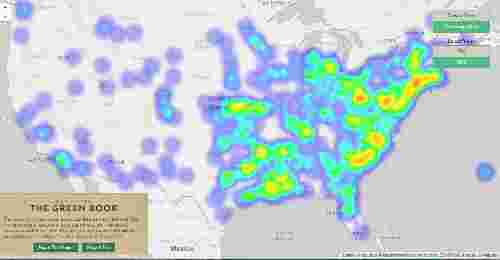
Brian Foo, NYPL Labs
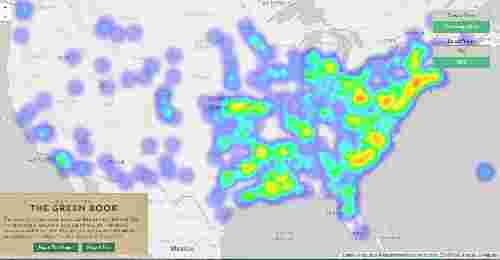
Brian Foo, NYPL Labs
Though the Green Book was a life-saving tool at the time, it's also a vivid reminder of just how discrimination and prejudice made -- and still make -- the world much smaller and less free.
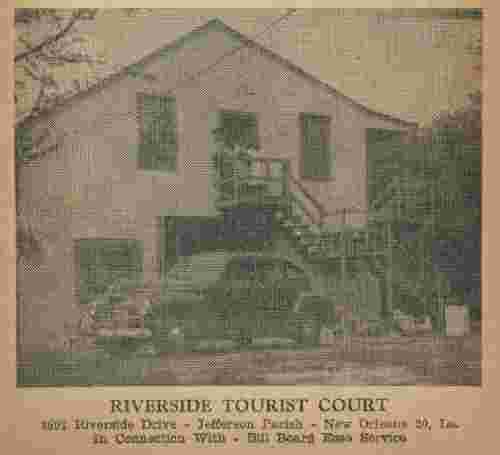
Though Green's list was far from comprehensive, many states have only a handful of listings, and the guesthouses and motels featured in the photos look small and somewhat shabby today.
In the introduction to the 1949 edition, Green writes: “There will be a day sometime in the near future when this guide will not have to be published."
"That is when we as a race will have equal opportunities and privileges in the United States. It will be a great day for us to suspend this publication for then we can go wherever we please, and without embarrassment. But until that time comes we shall continue to publish this information for your convenience each year.”
The last edition, published in 1963, was an international edition which described itself as a guide to "vacation without aggravation." Green died in 1960, and the book gradually lost some relevance after the creation of a national highway system in 1956, which meant travelers no longer ventured as much into cities and towns, and the Civil Rights Act of 1964, which outlawed discrimination in hotels, restaurants and other public accommodations.
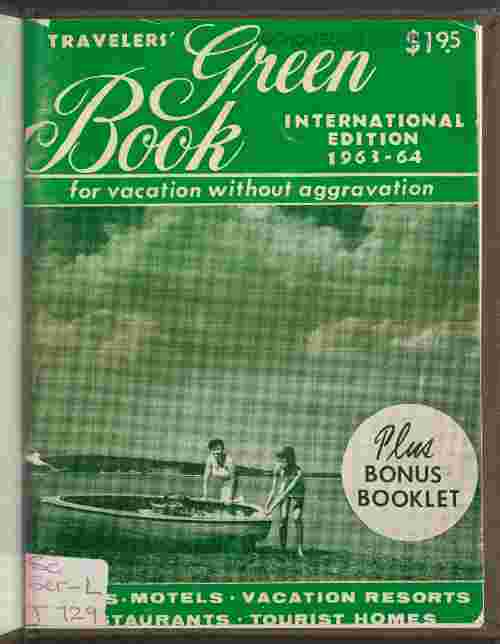
The 1963-1964 international edition, the last Green Book published
Ana Swanson is a reporter for Wonkblog specializing in business, economics, data visualization and China. She also works on Know More, Wonkblog's social media channel.
